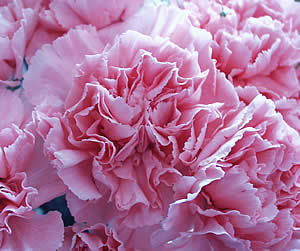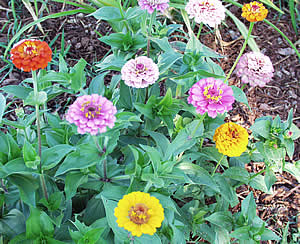Crazy for Carnations
 "The fairest flowers o’ the season are the carnations."
"The fairest flowers o’ the season are the carnations."
from "A Winter’s Tale" by William Shakespeare
The Carnation, January’s flower, is simple and sweet with ruffled
petals that communicate romance. Carnations are a favorite given in
mixed boquets or bunched on their own. Even a single stem is a
thoughful gift. Though carnations are usually thought of only in terms
of what the florist can provide, this member of the Dianthus family comes in many colors and varieties.
About Carnations
Carnations are native to Southern Europe, where they have grown for over 2000 years.  Introduced
Introduced
to the United States in the early 1800’s, carnations were grown in "hot
houses" in the New England states which provided a suitable climate.
Carnations travelled across the country as did immigrants. The American
Carnation Society was founded in 1892 (later dissolved in 1981) and an
American author, Mr. Charles Willis Ward, wrote The American Carnation – How to Grow It in 1903.
The variety generally known in North America, Dianthus caryophyllus,
is grown in greenhouses due to extreme summer temperatures. The plants
are usually 2-3 1/2 feet tall with large terminal double ruffled
flowers. The most common colors are red, white, and pink, with less
common colors yellow and purple. Solid color carnations are called
"selfs". If striped with one color, they are known as "flakes";
"bizarres" if striped with two or three colors. "Picotees" have petals
edged or bordered by another color. Unusual colors may appear, often
associated with holidays such as green for St. Patrick’s Day.  Such colors are created by adding dye to the water that the stem sit in after they’ve been cut.
Such colors are created by adding dye to the water that the stem sit in after they’ve been cut.
Growing Carnations
In
North America, summers are usually too hot for growing many varieties
of carnations. Greenhouse varieties are therefore the norm. Cuttings
are taken from stock plants in early winter. They are rooted in damp
sand and set out in fields in May. The plants are brought into the
green house in late July. The plants are then in bloom from autumn
until spring, explaining their popularity for January and again for
Valentine’s Day. Many plants are grown commercially in climate
controlled greenhouses year-round.



